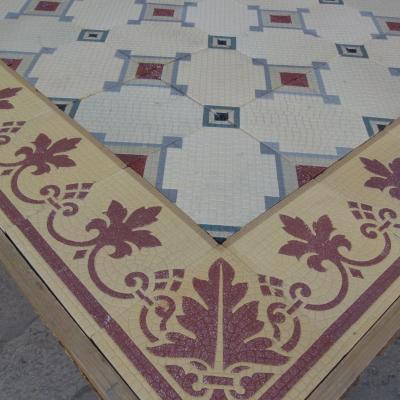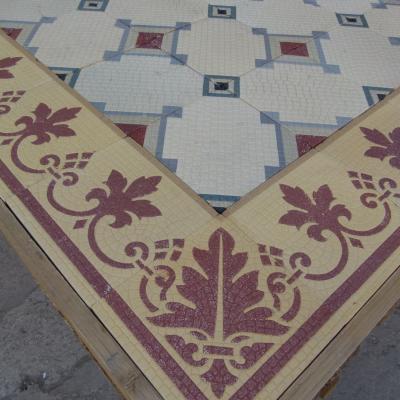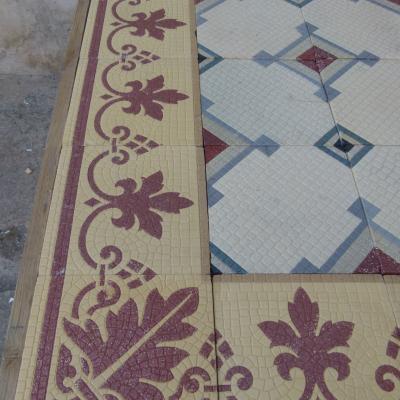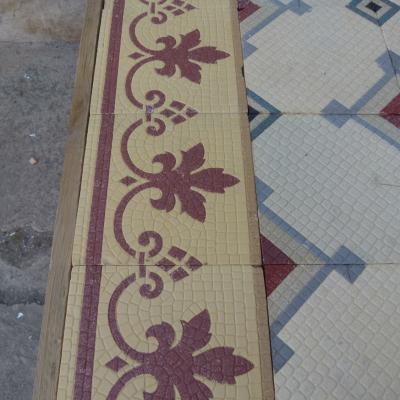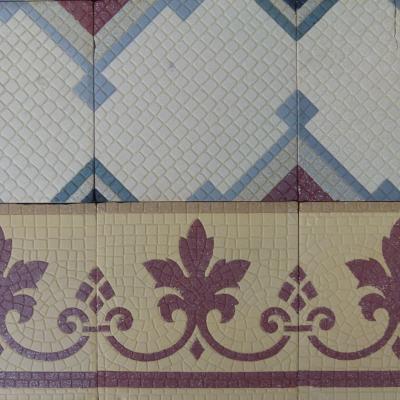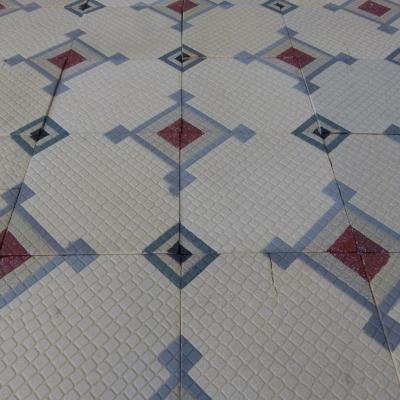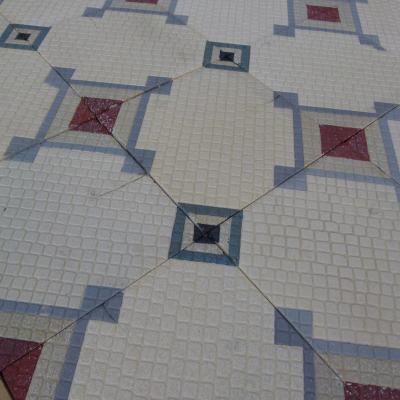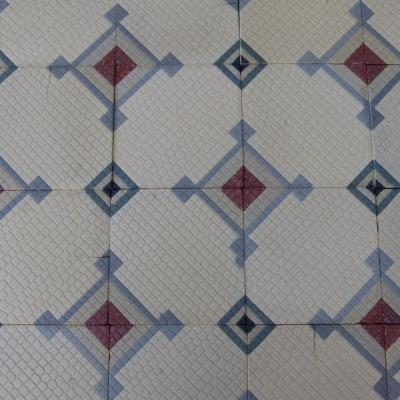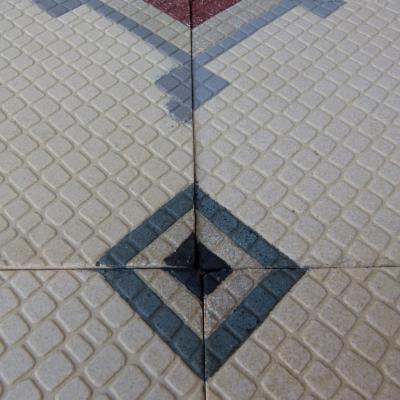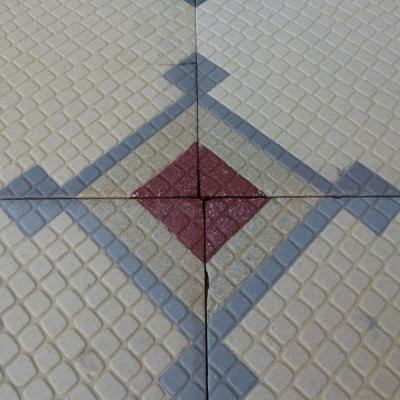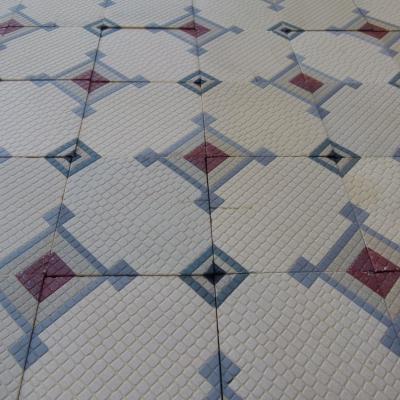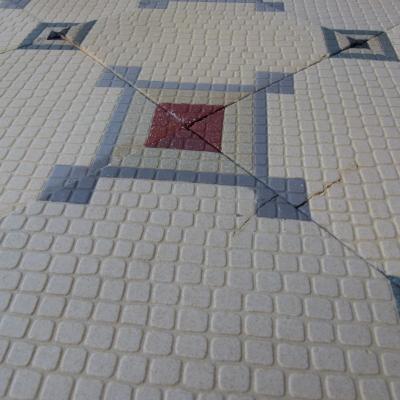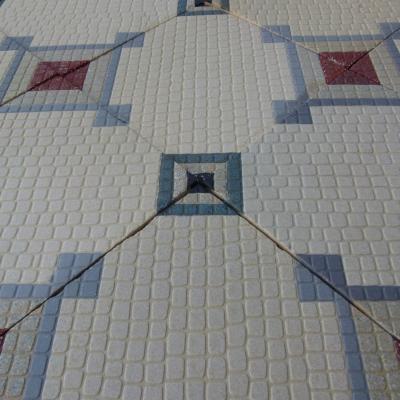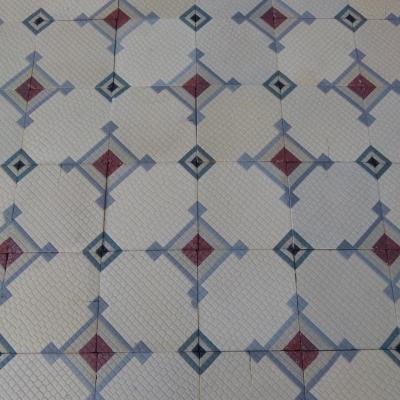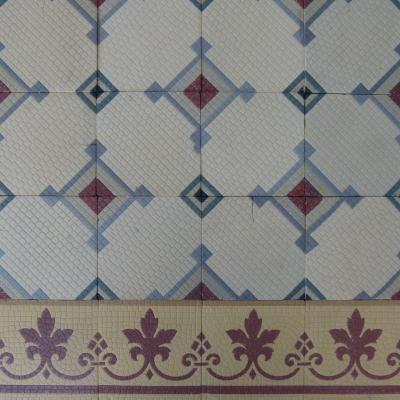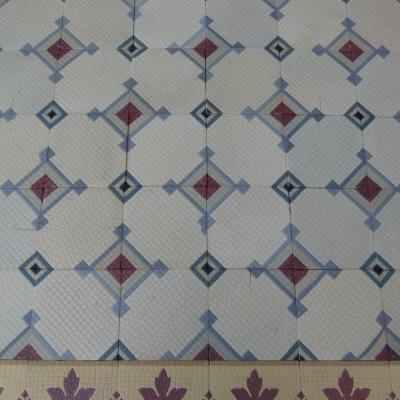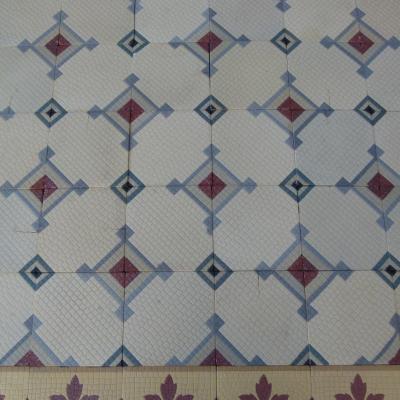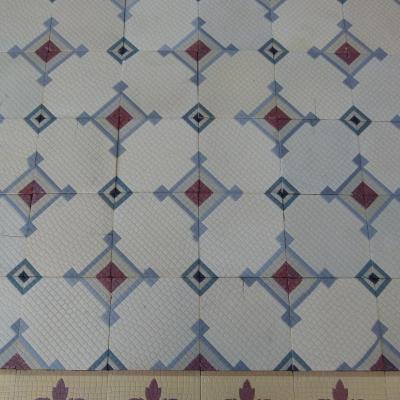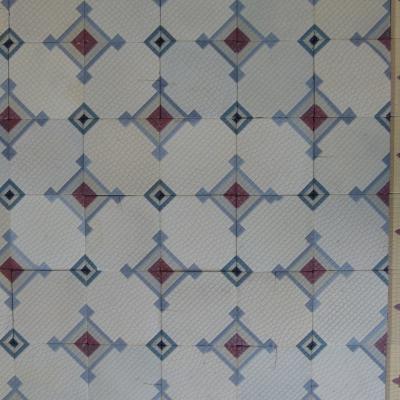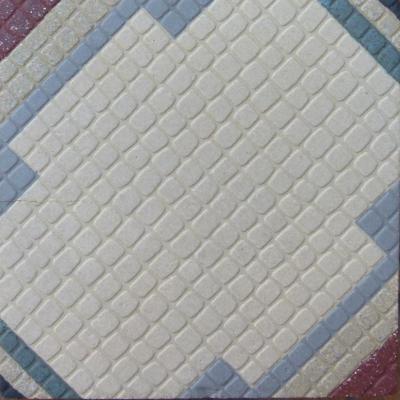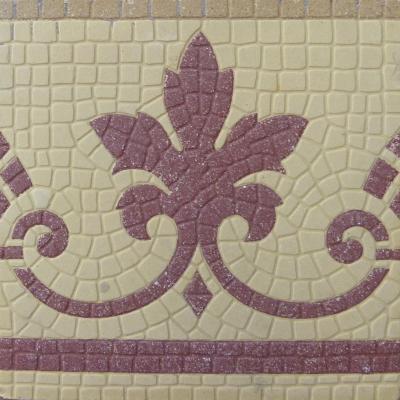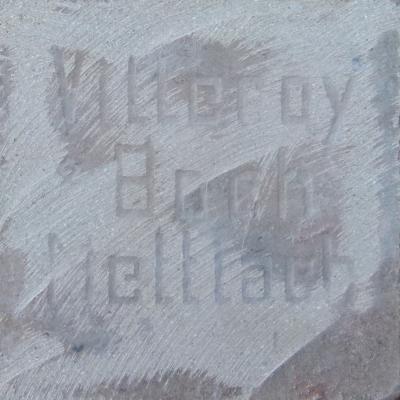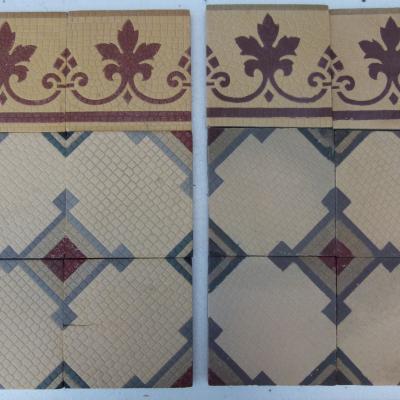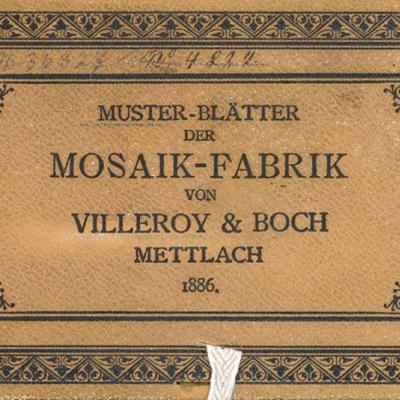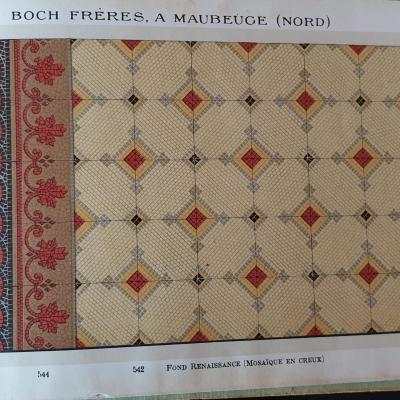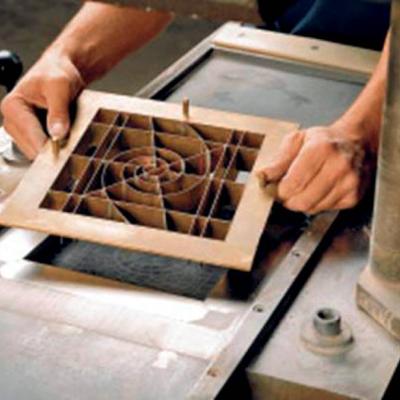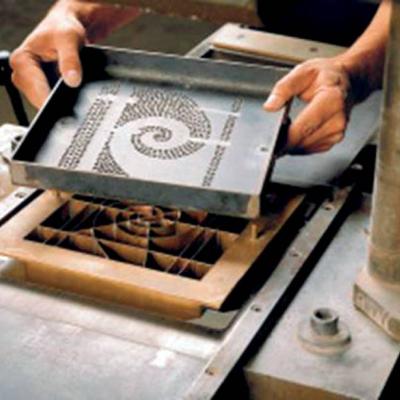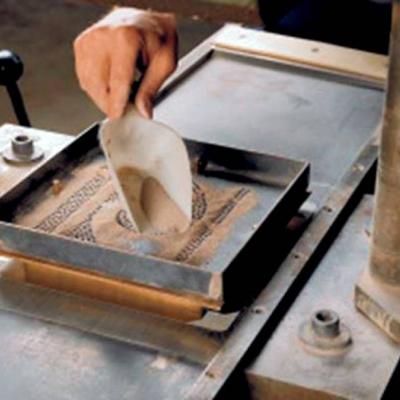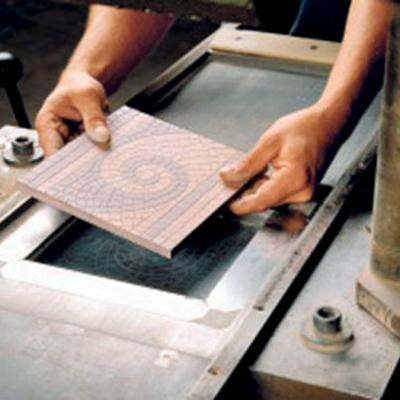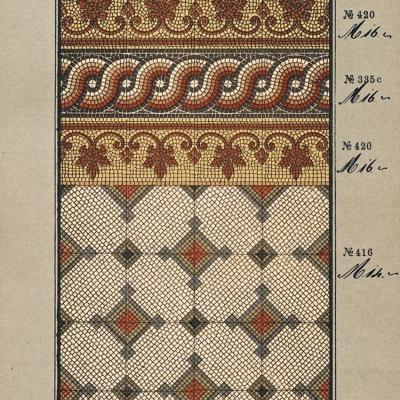A 12m2 / 130 sq ft. latticed ceramic floor with original borders c.1886-1900
A fine antique ceramic and one we have reclaimed twice in 18 years of trading, this superb handmade floor was manufactured in Mettlach, Germany. The floor appears in both the Villeroy & Boch Mettlach, catalogue of 1886 as well as in the period catalogues of their sister French company, Ceramiques Carrelages Boch Freres, Maubeuge. We also have this Boch Freres, Maubeuge floor available and have included a link below to its details.
The design is minimalist and pure using faux cabochons to link the main cereal coloured field tiles and a vegetal themed same-size border tile frames the floor. Exclusively used by both Both Freres and Villeroy and Boch in some of their tile designs, the surfaces of these ceramics are latticed.
These 17cm / 6.7 inch sq. tiles, over 17mm / 0.67 inch thick and weighing 1.25kgs / 2.75 lbs are a fine, quality heritage ceramic, each now having cleaned beautifully back to their original state. Included in the gallery are four photographs showing what would have been the slow, precise, manual production of individual tiles that would have been the traditional production method at the factory over a century ago. In this instance, the pouring of the coloured slips into the tile mould, pressing under several tonnes of weight before their subsequent kiln firing.
Total surface area:- 12.5m2 / 135sq ft.
Being a highly fired tile they can be laid inside or outside of the home but with the additional advantage of having a latticed surface, providing improved traction underfoot, they lend themselves to laying on a patio, in a summer house, a garden path or as an entrance path.
Tile quantities, give or take one or two:-
FIELD TILES – 320 - 9.2m2 / 100 sq ft.
LARGE BORDER TILES – 100 plus 4 corner tiles - 3m2 / 32 sq ft or 17.7 linear metres / 58 linear feet
plus some free tile rejects to use as offcuts
The sister floor, manufactured by Boch Freres, Maubeuge, and in a similar palette, is also available and details can be found if you click here We have included a photo (number 23) in the gallery of 6 tiles from both floors to show their slightly different design and palette; to the left the Villeroy Boch Mettlach and to the right the Boch Freres Maubeuge. Integration of the two floors could be possible as the tiles are the same size. The primary difference between the two tiles is the size of the faux cabochons (the burgundy & grey coloured design element on each tile, creating the impression of a tile insert).
NOTE
Antique tiles were most commonly made in single or two tile moulds. Before current computer automation methods their moulds were made by hand and the colour slips mixed by eye. Kiln temperatures could also be variable, as could the firing time. The result is that often tiles display subtle size and thickness variations and there can be tonal variations in colours, owing to the slip mixing and/or firing time. All of this makes these handmade tiles unique and adds to their charm. Some floors display their subtle variations in size and tones, some not, but when photographing we always take a random section of the floor so that it is representative of the whole. A tiler should always dry lay a section of the tiles to familiarise himself with them before starting to fix lay.
CE264



